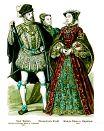|
|
||
|
In 1762 he wrote out the note shown below which reads:- "July the 9th: 1691 Robert Barratt wors (was) Born Baptised the 14 day as near as I cane gess and now I am In my 72 years of my age and I roat (wrote) this In 1762." what the calculations were for is not known. Robert used the money he- had accumulated as Capital and lent it out at Interest. Thomas Stoaks was lent £lQ-from 6th January, 1762, James Hadson borrowed £10 & £5 from 13th March, 1762. Abraham But had a waggon worth £7 and £3 in money from January 20th, 1763, All these transactions were written down in a memorandum by Joseph Freelove at Robert Barratt's request on 10th January, 1764 from his Book and the corresponding Notes were left in Joseph Freelove's hands. This was an age when an adequate supply of legal tender coin could not always be taken for granted, and when there was no network of banks by means of which money could be transferred from place to place by cheque. Many transactions would be done by "note of hand" which was a promise to pay (sometimes with interest) at a future date or on demand but not guaranteed by a third party. Robert may have asked Joseph Freelove to act as his agent perhaps when Robert was ill. Some later transactions were added to the note in a different hand, perhaps by Robert himself, these are undated. Mr Boddington, Robert's tenant for the cottage at Box Endside is noted as keeping a year and a halts rent to be used to the charge of "the fine and Heriot". Fines & heriots were paid to the Lord of the Manor when a property changed hands. Thomas Boddington was lent £5, Thomas Stoaks was lent another £10, James Hadson another £10. John Biges (son of Abraham Biggs) was lent 7 guineas. Many of the items are crossed through denoting repayment. 1763 was the last time Robert signed his name accepting the Overseers Accounts for that years expenses. |
After several years when Robert did not appear
in the rate books, he starts paying rates on a cottage in East Endside, |
|
 THE BARRATT FAMILY
THE BARRATT FAMILY